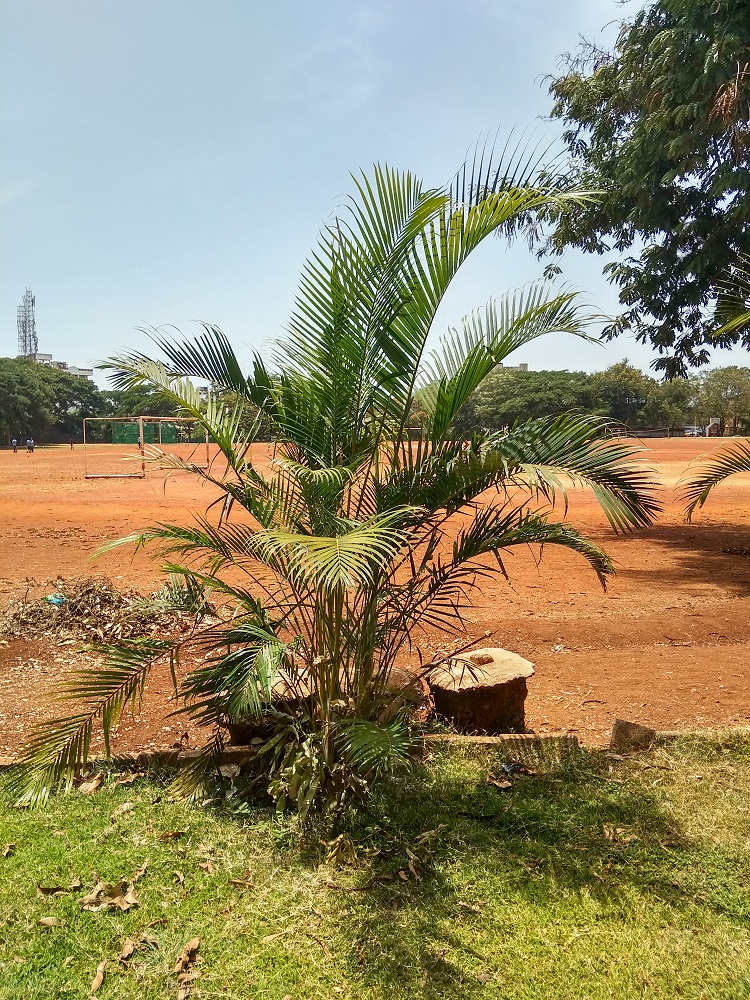Madagascar Palm - Golden Palm Tree

Dypsis lutescens
Summary
Scientific Classification
Kingdom: Plantae
Division: Magnoliophyta
Class: Monocotyledonae
Order: Arecales
Family: Arecaceae (Palmae)
Genus: Dypsis
Species: D.lutescens
Scientific Name: Dypsis lutescens(H.Wendl.) Beentje & J.Dransf.
Common names
English: Madagascar Palm, Areca palm, Butterfly palm, Cane palm, Golden cane palm, Yellow palm, Golden feather palm, Yellow butterfly palm, Golden-yellow palm.
Discription
- Habit and Habitat: A small palm, often possesses few stems from the base.
- Distribution: Native to Madagascar and South India and naturalized in the Andaman Islands, Réunion, El Salvador, Cuba, Puerto Rico, the Canary Islands.
- Morphology:
stem: Bamboo-like, slender with annulated rings.
Leaf: Pinnate, 40-60 pairs of leaflets. The crown shaft is yellowish with a white waxy covering. Upper and lower leaflet surfaces are glossy green to yellow-green, without spines; the prominent midrib is yellowish.
Inflorescence: Axillary panicles.
Flower: Small, whitish or flowers are yellow, pedicellate, unisexual, with 3 sepals and 3 petals, borne in groups of 3 (I female and 2 male), male and female flowers on the same inflorescence. Flower stalk coming from below the leaves.
Androecium: Stamens are 6 (3 + 3) equal stamens some with connective protrusions. Staminodes are absent Pistillode are present, usually conspicuous, columnar.
Gynoecium: syncarpous, normally pseudomonomerous and possess septal nectaries that effectively delimit the carpel margins and indicate insect pollination. There is a central solid transmitting tissue that extends from the placenta to three stylar canals. The stylar canals of the two sterile carpels are apparently functional, in addition to that of the fertile carpel.
Fruit: Purple or orange-yellow, about 2 cm long.Yellow to purple, ellipsoid drupe (light olive green to yellow in early stages), about 2-2.5 cm in diameter the flesh coat over the seed is not edible.
Seeds: About 2.5 in diameter, sandy brownish in colour with a vein-like texture.
Flowering and Fruiting time : Almost throughout the year. - Propagation: by seeds.
- Importance:
a.The Areca Palm or Butterfly Palm is a relatively easy care indoor houseplant that has much going for it. Its attractive nature has been awarded the Royal Horticultural Society’s Award of Garden Merit, which for a plant grown more commonly indoors than out, is a pretty rare feat.This ornamental palm is generally cultivated in gardens.
b.According to the NASA Clean Air Study and Dr. B. C. Wolverton, the areca palm filters xylene and toluene from the air.making it an effective humidifier.
c.This is one of the most useful Palms of the tropics the world around. Native to Madagascar, Golden Cane Palm is tropical-looking, serves as a super, bamboo-like screening plant and is relatively pest-free. - Location: throughout college campus.
 Trees of GSS Project supported by Makerspace Belgaum Website concept and designe by
Trees of GSS Project supported by Makerspace Belgaum Website concept and designe by